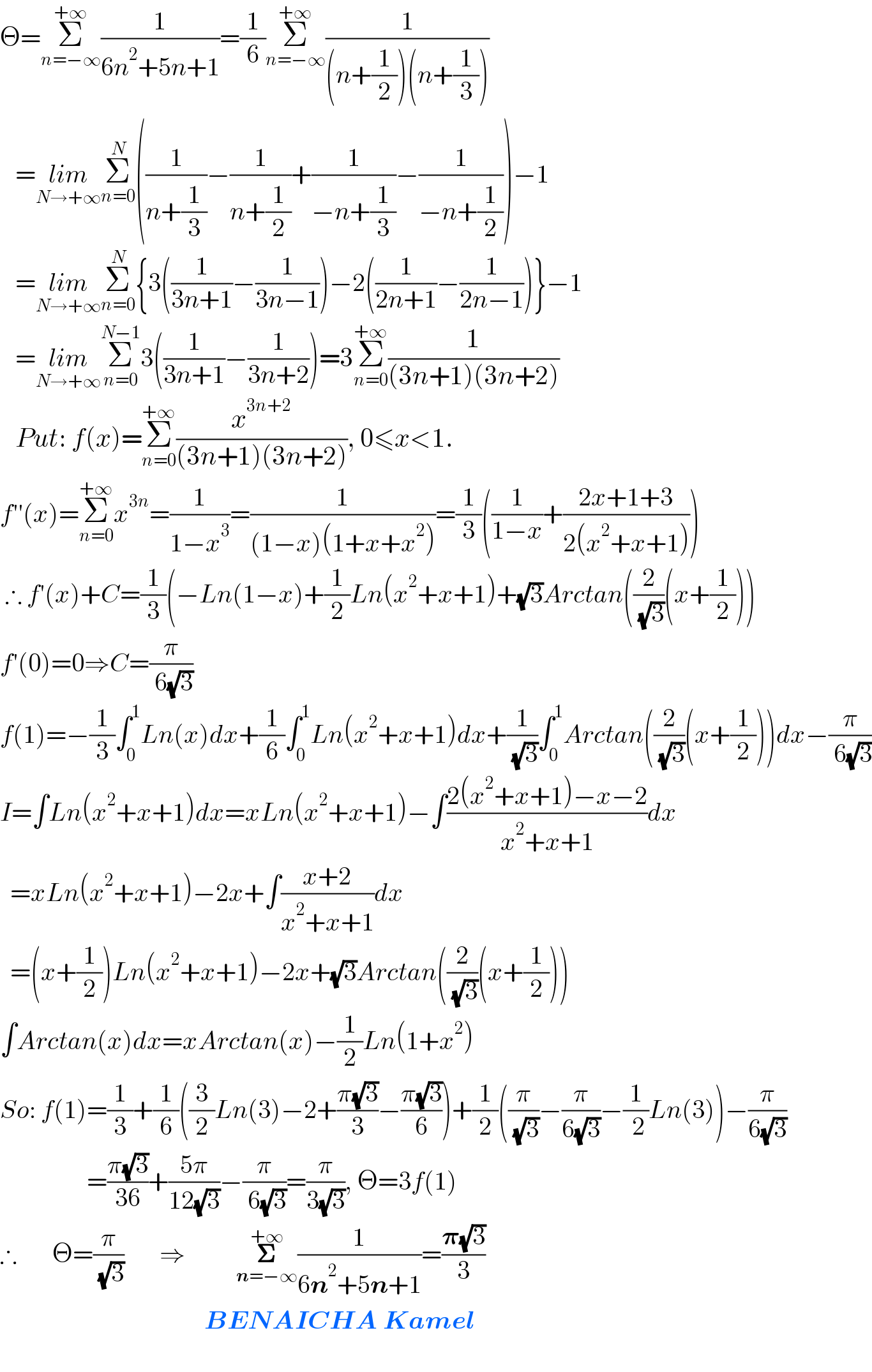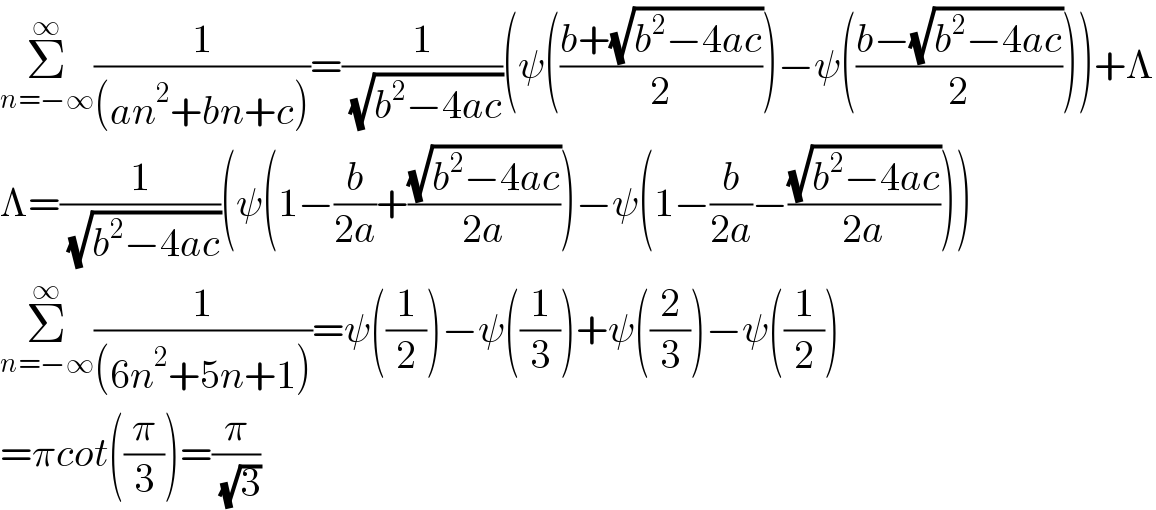
Question and Answers Forum
Question Number 138821 by mnjuly1970 last updated on 18/Apr/21

Commented by Kamel last updated on 19/Apr/21

Answered by Kamel last updated on 19/Apr/21

Commented by mnjuly1970 last updated on 19/Apr/21

Answered by Dwaipayan Shikari last updated on 19/Apr/21

Commented by mnjuly1970 last updated on 19/Apr/21

Answered by mnjuly1970 last updated on 19/Apr/21

